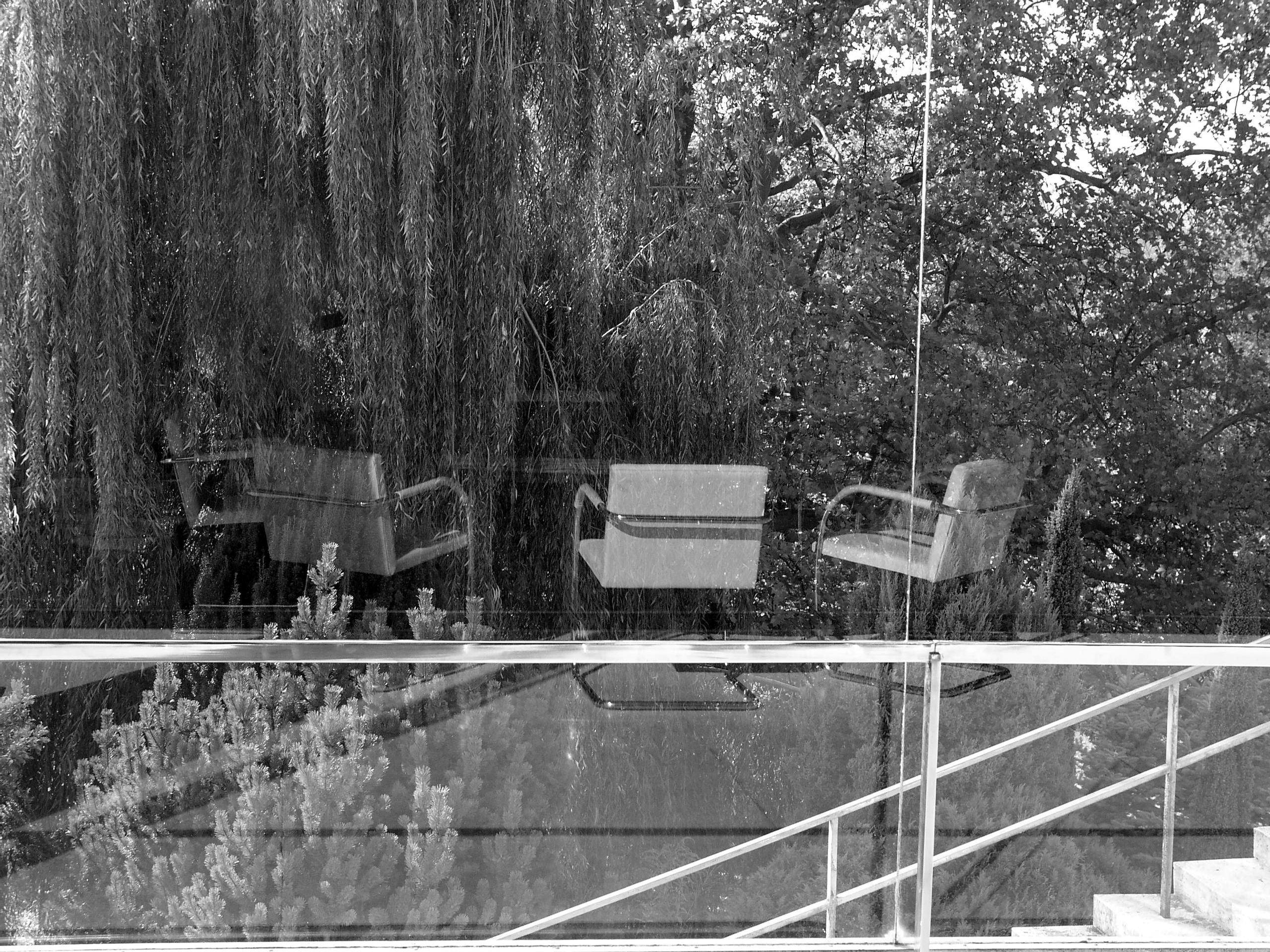The first attempts at renewal and a dignified cultural use of one of the most famous villa structures in the world dates back to the beginning of the 1960s. The initiator and moving force behind the activities was the Brno architect František Kalivoda who had additionally established personal contacts with Grete Tugendhat. She consequently visited Brno and her house, for the first time since the year 1938, in November 1967. Grete Tugendhat also presented a paper in Czech concerning the circumstances and course of the construction of the Villa on the 17th of November 1969 in Brno as part of the Ludwig Mies van der Rohe exhibition in the Brno House of Art (20th December 1968 – 26th January 1969) which now ranks among the key sources for understanding the house. František Kalivoda discussed the restoration of the garden with Markéta Roderová-Müllerová in April 1969 who had cooperated with Mies on the design and was prepared to draw up a plan for planting the garden in accordance with Mies’ concept (including the furnishings of the winter garden). Cooperation on the renewal of the Villa had also been tentatively agreed upon with the Chicago offices of Mies van der Rohe. The Association for Restitution of the Protected Building ‘Villa Tugendhat’ met in Brno in August 1969 and April 1970 with the participation of Grete and Daniela Tugendhat. All of the activity came to halt, however, at the beginning of the 1970s. The main protagonists passed away (Ludwig Mies van der Rohe 1969, Grete Tugendhat 1970, František Kalivoda 1971) and the consequent political situation after the year 1968 had little sympathy for activities of this kind.
František Kalivoda (1913-1971) ranked among the most remarkable figures of Brno culture from the 1930s to the 1960s. He primarily impacted Czech modern architecture as a publicist and an organizer with impressive international contacts. He was, amongst other things, secretary for the Czechoslovak group of the International Congress of Modern Architecture (CIAM) from the year 1935. He initiated the founding of the Eastern European section of CIAM in the year 1936 which consequently met in the year 1937 in Brno and Zlín. During the post-war period, times of political and social tension, he successfully carried out excellent projects in various areas of culture, from the publications Brno, The Aroma of One City (1959) and Brno, A City of Work and Progress (1966) to the organisation of international events dedicated to renowned Brno figures such as Viktor Kaplan or Adolf Loos. Part of Kalivoda’s, up until the present, still unprocessed legacy, is located in the Brno City Museum where it is currently being organised by Mgr. Jindřich Chatrný as part of a grant from the Czech Academy of Sciences – The Personality and Work of the Architect František Kalivoda (1913-1971) within the Context of the European Avant-Garde.
The article can be downloaded on the Czech version of our web pages.
Dagmar Černoušková – Jindřich Chatrný, The Architect František Kalivoda and the Villa Tugendhat “cause” (several notes), Prostor Zlín, year XIV, no. 4, 2007, pp. 36-43

Reflection of the dining table in the window, 2008, photograph: Barbora Roučková
